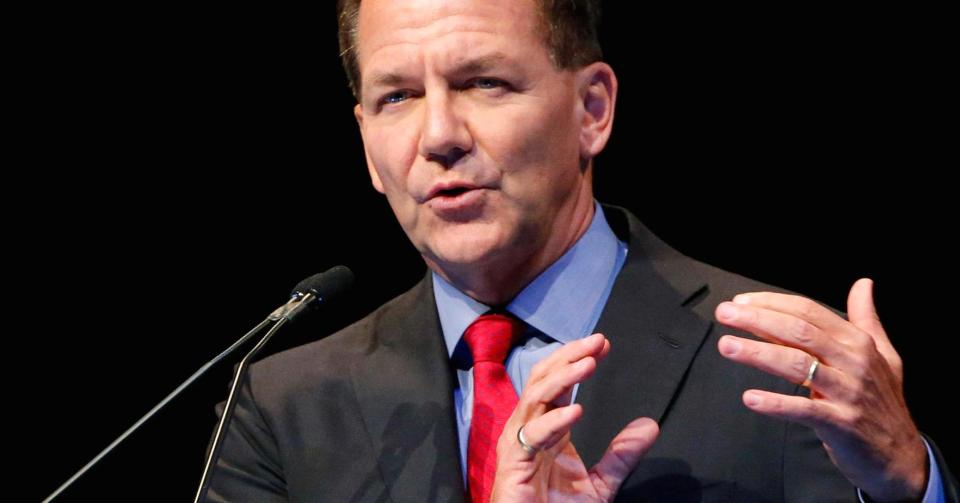Paul Tudor Jones: Here's why the 1987 crash was an accident waiting to happen
Legendary hedge fund manager Paul Tudor Jones became famous after predicting the market crash of October 19, 1987, known as “Black Monday” when the Dow Jones dropped more than 22%.
“The crash of ’87 was really interesting just because the crash of ’87 probably never would have happened except for, again, the market infrastructure at that point in time,” Jones said in a conversation with Goldman Sachs CEO Lloyd Blankfein as part of the firm’s “Talks at GS” series.
Jones, 63, began his career at E.F. Hutton as a commodities trader in the cotton pits in 1976 before transitioning to macro trading and founding his hedge fund, Tudor Investment Corp in 1980.
“I remember, because I started out in ’76 trading commodities,” Jones said. “For 120 years all commodity futures had limits, and I remember so many times in the late ’70s, early ’80s, where the cotton market would be limit up or the soybean market would be limit up because that was the allowable amount that prices could move. And they would not let them go anymore because they knew the irrationality of human nature and the possibility of what a mob can do to anything, so they had limits.”
Then financial futures came along.
“[In] ’87, there were no limits on any financial futures,” Jones said. “It was an absolute accident waiting to happen. And then they started portfolio insurance. And in ’87 you could just look on any kind of historical metric and see the stock market was stupidly overvalued. 10-year rates were 10 1/2%. I think the dividend yield on the stock market was about 4 and 1/2 or 5, so just think about that compared to today right? 500 basis points, we have 10-year rates right now at something like 7 and 1/4, 7 and 1/2.”

Finally, the market broke. One thing Jones has learned over the last 40 years is that it’s the “same story” over and over again.
“It’s the same old story so often, just with different characters, different times, different plots,” he said. “So that looked a lot like 1929 to me and I knew for a fact that, if and when it broke, because of the derivative structure, that the downside was going to be unlimited, literally unlimited because there were no limits on futures.”
The most recent example was this past February when the market entered correction territory and traders got hosed on short volatility products.
“[That] was just a bomb ready to explode. That was just a matter of time. And that entire break in the first week of February was all derivative inspired. And if I think of some of the greatest financial crisis of the last 30 years, they, generally speaking, are derivative inspired because that’s where all the leverage is.”
A year after his 1987 bet, he founded Robin Hood, a nonprofit dedicated to combating poverty in the New York City area. Over the last 30 years, Robin Hood has given away more than $3 billion.
Watch the full discussion here >>
—
Julia La Roche is a finance reporter at Yahoo Finance. Follow her on Twitter. Email tips to laroche@oath.com.

 Yahoo Finance
Yahoo Finance 
